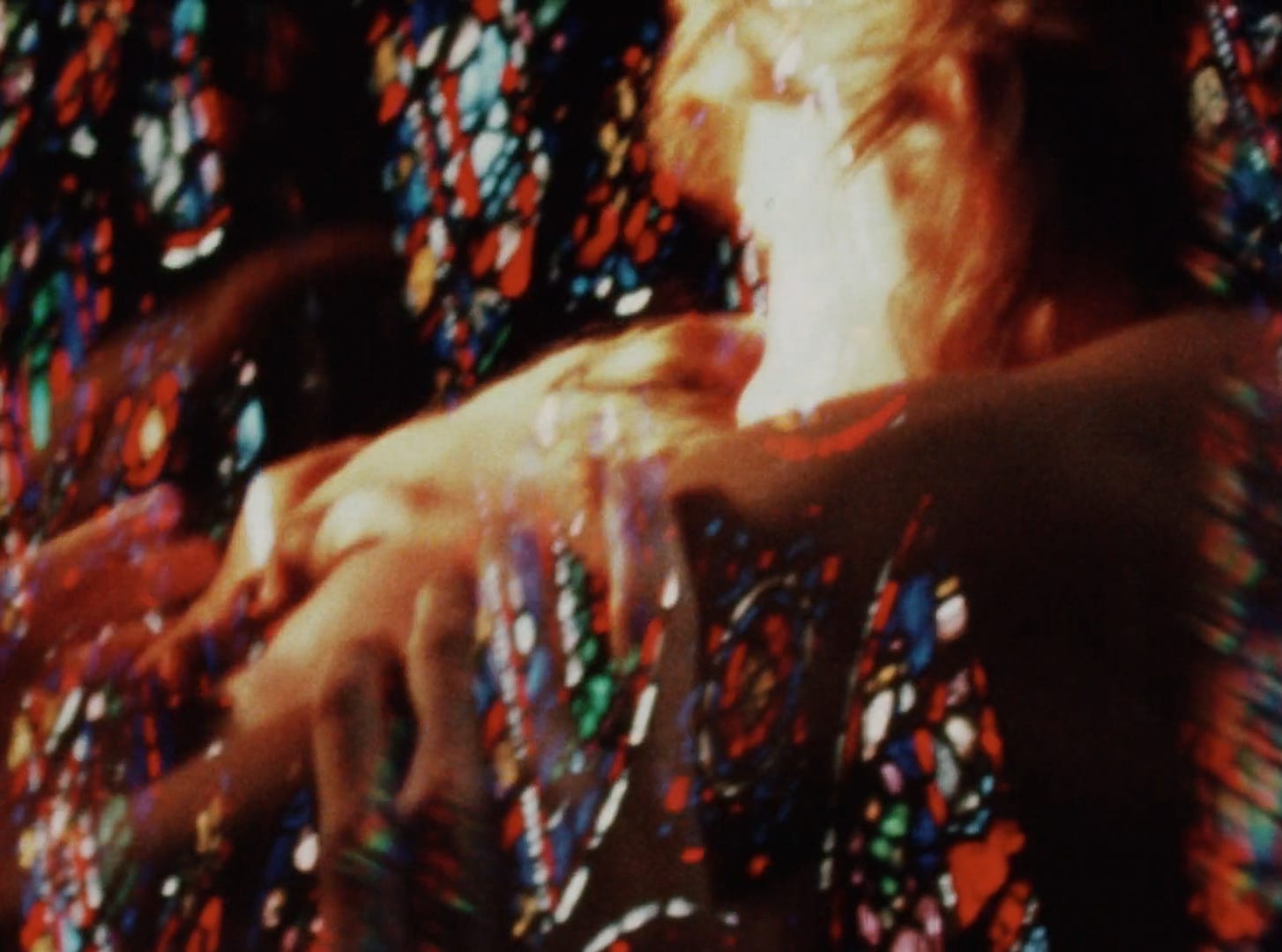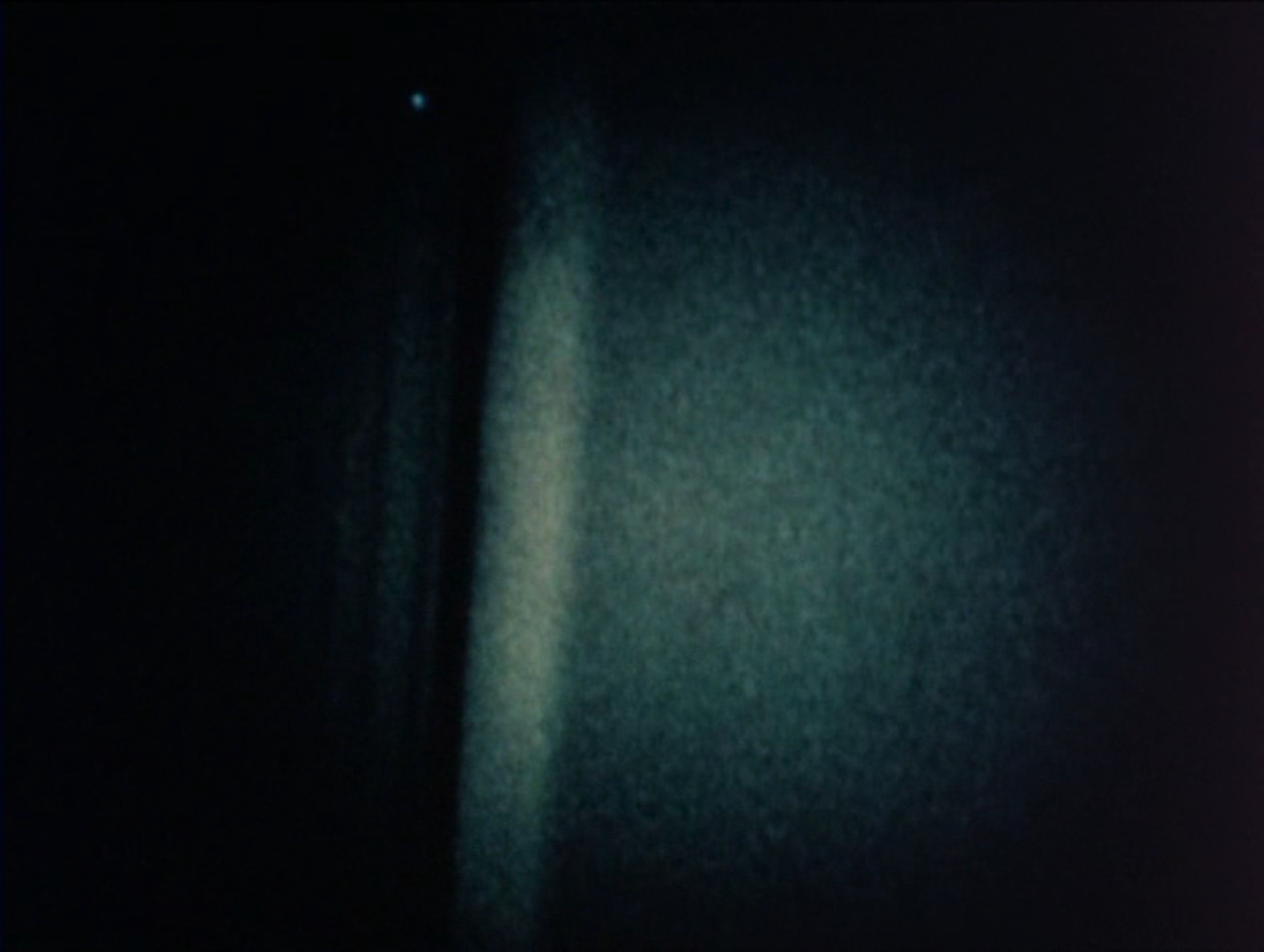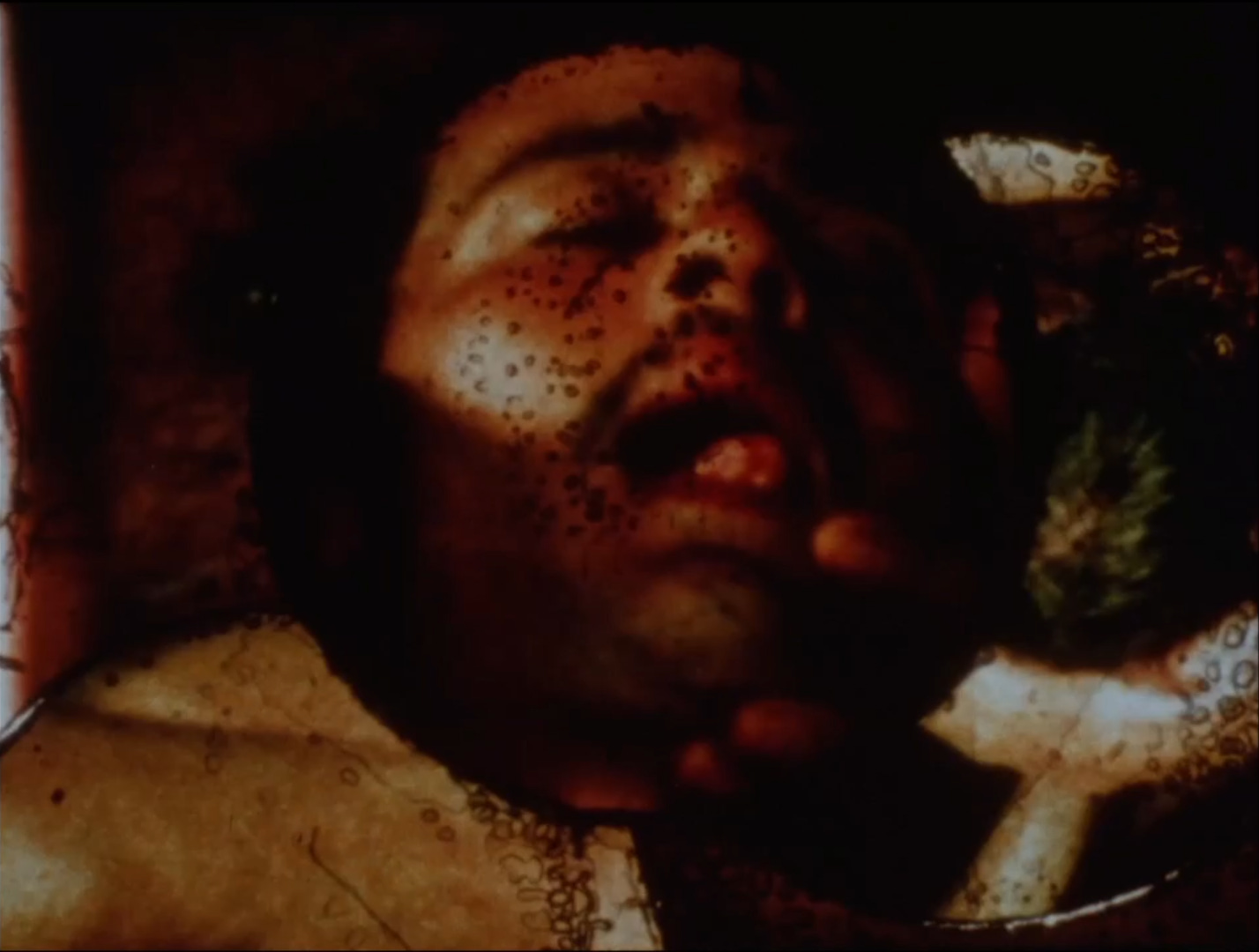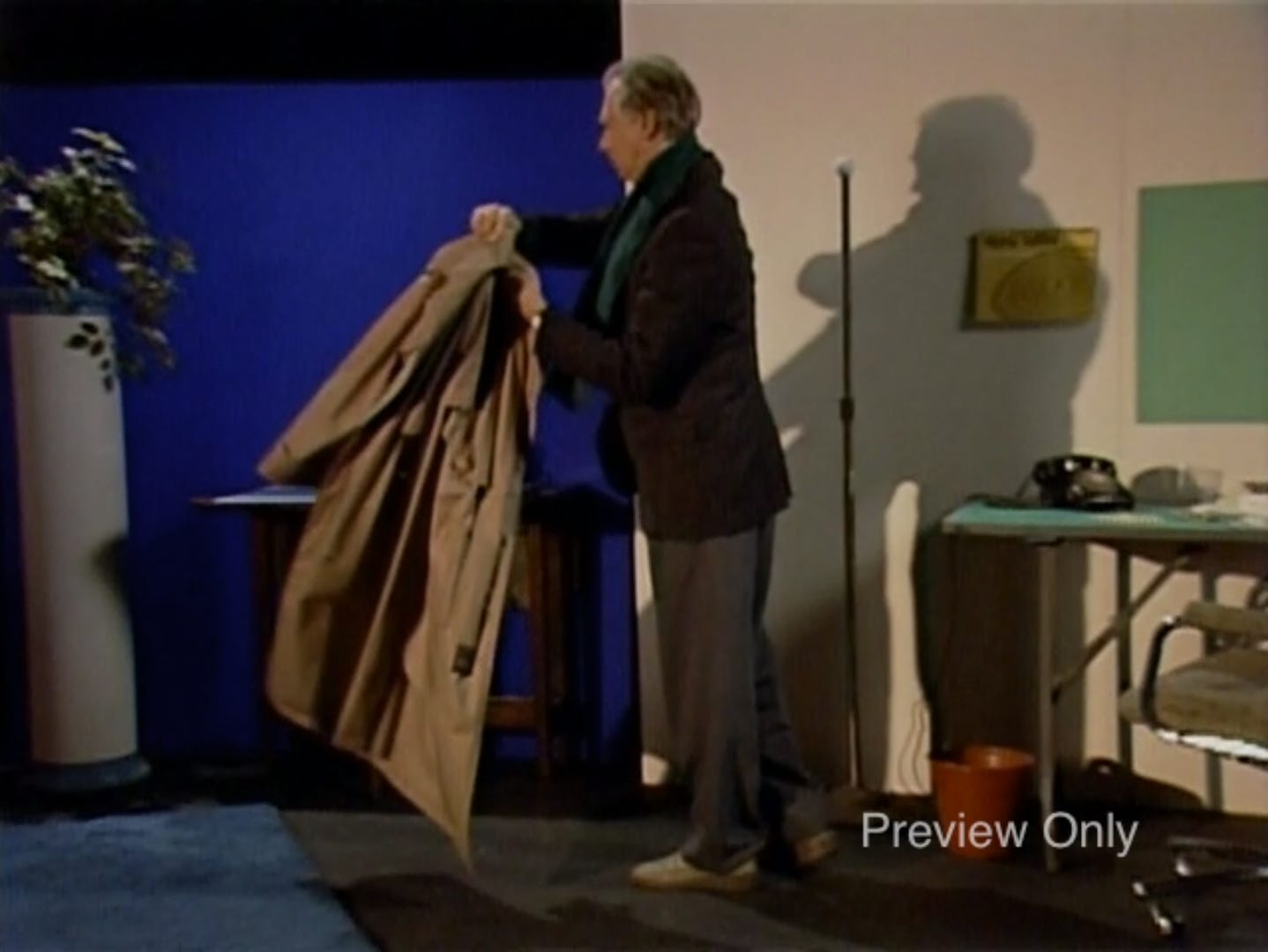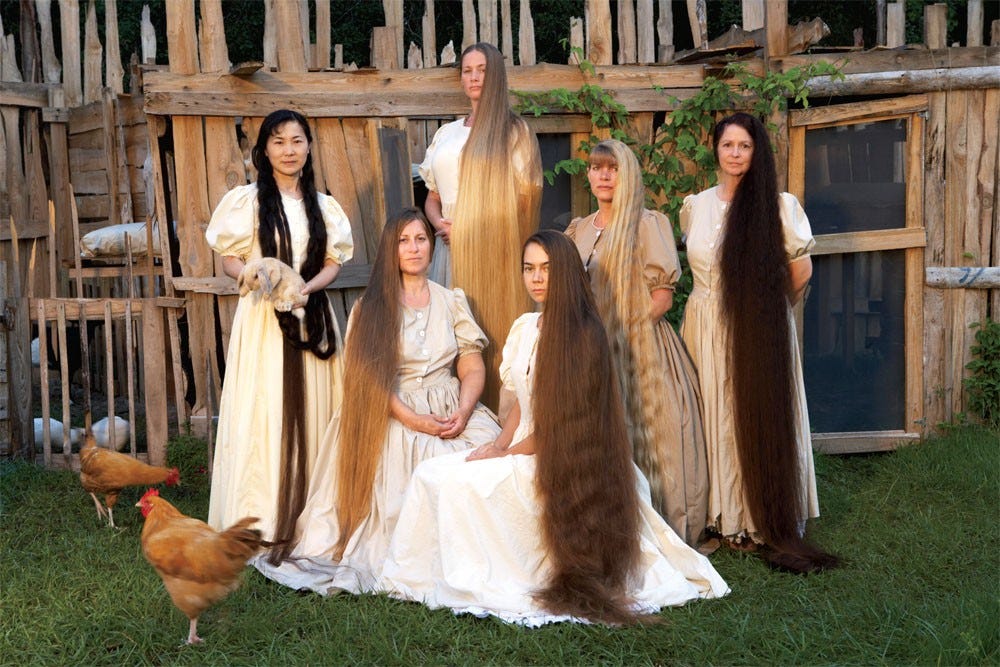A major reason I started this blog was to be able to write more freely, without worrying about the format or constraints of publication. I want to write more often, about more films. In that spirit here are some of the best avant-garde films I’ve seen recently while at home for holidays and Covid, some of them with just a brief intro and some with lengthier freeform notes. (I’m unsure about the trade offs of compiling notes about many films into long posts like this vs. publishing more frequently with fewer films per post, or even just one; if you read this and have thoughts about that please let me know.)
Hollis Frampton: Process Red (1966)
Rapid fire montage has become commonplace in experimental films of the last half century, often used in a more diaristic or impressionistic way, but this short piece immediately stands out for its rigor and energy and sense of formal inevitability. Frampton at his most accesible.
Ronald Chase: Cathedral (1971)
I don’t have much to say about this one, it’s just a beautiful and worshipful consecration of queer love. Show this to the folks who say sex scenes in movies are gratuitous.
Paul Winkler: Bark-Rind (1977), Sydney Harbour Bridge (1977), etc.
Winkler was a formative artist in the Australian avant-garde, and stylistically sort of a less rigorous cousin to American and British structuralist experiments in spatial perception. He especially reminds me of Gehr and Welsby/Raban, and you could make interesting comparisons between Winkler’s Cars (1979) and Gehr’s Shift (1974).
Winkler’s earliest films work in a sort of frenzied reanimation of shots of textures and patterns. Brickwall (1975), for example, is pretty much what it sounds like, twenty minutes of shots of brick from various distances and in various rhythms of editing, accompanied by the steady sounds of a bricklayer (actually the filmmaker) working. A decent enough semi-structural film about work and craft and the analogy of manual labor and filmmaking, but it made me think of similar works I like better, like Canal Cinema (Jim Jennings, 1983) or the more recent de-composition (Laura Kraning, 2023).
The best by far of these early works is Bark-Rind (1977), which works up bark, flowers, leaves, grass, and other objects of nature into a whirlwind of energetic patterns which flirt with total abstraction. The soundtrack seems to be created from insect noises and sounds like a buzzing swarm of bees. Winkler says he “wanted to show the life force of a tree,” and the film accomplishes something like that. An invigorating work, the avant-garde equivalent of a blockbuster action film.
Later in the 70s and into 80s, Winkler started working with compound frames built from cutouts and strips of film recombined. Some of this work can feel a bit cheesy—like when Ayers Rock (1981) uses cut out patterns in the shape of Aboriginal paintings from the cave—but it’s generally a lot of fun to look at. The best of these that I’ve seen (there are many that I haven’t, Winkler was prolific and his works fill up a 12-DVD set) is Sydney Harbour Bridge (1977) which uses its complex frame to play with contrasts between the propulsive geometry of the bridge and the placid stillness of the water. At times the up and down curve of the bridge occupies a half dozen or more different squares on the screen, with an effect like watching a school of fish jumping in and out of water.
David Haxton: Painting Room Lights (1981)
This is the culmination of a series of films Haxton made that use film negative to explore the qualities of light and spatial geometry in film. The films are performance pieces where the artist moves around lights, screens, and string, painting over various parts of these with black or white paint. Because they’re shown in negative, whiteness consumes the screen and erases visibility as light sources are limited, and the light sources show up as black shapes and lines. Earlier films in the series work through more basic concepts and each seems to build upon the last, so I’d recommend watching a few of them in order and not starting here, even though this is pretty clearly the best and most sophisticated of them. Here, Haxton has an elaborate system of wire or string set up in the room, which you can’t see until they emerge as black lines when he coats them in reflective paint, “drawing” a three-dimensional sketch of a landscape and then cutting it apart, among other complex visual stunts. It’s the sort of film that might sound obvious in its treatment of fundamental tools of visual art, but feels fresh and revelatory, and suggests the infinite capabilities of art made from its simplest ingredients.
Peter Rose: Secondary Currents (1982)
A playful structural film consisting of text on screen and a soundtrack of someone speaking. The text is in English but the spoken words are nonsense syllables which at times are made to sound like recognizable imitations of various languages. Much like Michael Snow’s So Is This (1982), the film takes these very limited means through an astoundingly effective variety of tricks and puns which are as amusing as they are sharp in their interrogation of how we understand sound and language. Rose particularly plays on how much the changing character of the sound (or its absence) determines our reading of the words.
Peter Gidal: Room Film (1973) and Guilt (1988)
Gidal is maybe the most radical of all structural filmmakers, and an explicit theorist of “structural materialist” film. A Marxist, he follows Brecht in arguing for an approach that denies viewers the possibility of identification with an immersive narrative or argument, but extends the argument to the forms of avant-garde film and critiques the avant-garde’s existing traditions (including American structural film) as providing just another form of immersion or another story to follow. Structural-materialist film seeks to force the audience’s attention constantly to a higher level engagement with the idea of representation and the materials of filmmaking. (I am oversimplifying, of course.) To this end, Gidal’s films often play with the extremes of light and dark and obstructed visibility. Room Film (1973) is about an hour of footage from a barely lit room whose objects are mostly not recognizable. Rather than let light dissolve into abstraction that can be appreciated as pure patterns, the film plays with the boundary between visible objects and pure light/dark, emphasizing the tension between the two. If you thought Skinamarink was too accessible and too focused on narrative, this might be for you
Guilt (1988) is even more extreme in its dialectic of grainy light and dark. Interestingly, while Room Film felt successful largely in the way Gidal describes his own aims, Guilt for me is quite a different experience. It feels like a religious meditation on the qualities of light and vision and the limits of human knowledge. This would be a terrible place to start for someone new to the avant-garde, but having seen many, many structural and minimalist type films, I found this almost transcendentally beautiful. (Gidal would perhaps not like to hear that.)
Luther Price: Sodom (1990)
A companion piece to Cathedral with the opposite approach, situating gay pornography among a hellish landscape of violence and misery. A provocation aimed at Christian conceptions of queer sexuality but one which also captures something profound about the nexus of desire and embodied suffering in a hateful world.
Michael Snow: See You Later (1990)
Snow has made so many films on such a high level for so long that I had somehow missed a work this excellent despite having explored his filmography pretty extensively. Like many of his films, it’s a simple concept executed with such supernaturally good judgement that it works better than it has any right to. A man (Snow) gets up from his desk, walks past a coworker and says “see you later” to her, then walks out the door. A series of actions that take a few seconds, but filmed in such radically slow motion that it lasts 18 minutes and the sounds are diegetically unrecognizable. The motion is so gradual that we can’t focus our attention on it even if we try, and instead other elements become focal points for our freely wandering eyes: the bright colors of the decorations, the shifting patterns of shadow, the abstract resonations of the soundtrack. Snow’s voyage across the room becomes an epic (and overtly comic) meditation on the very idea of “action” in cinema. By the time the door closes behind him, it feels like he’s ascended to another plane rather than simply leaving work.
Gariné Torossian: Drowning in Flames (1994)
Torossian’s early films are made in a technically virtuosic collage style, mostly constructed from still images including found materials, but they’re anything but static. They look like optical printing work, but apparently are made in camera through a process of shooting and reshooting that uses both film and video. The films are dynamic patchworks of images which sometimes divide into two or more frames before returning to a unified image. Here, in my favorite of her works, she borrows photographs from the Starn twins, a pair of fellow Canadian artists who themselves rework famous images from the history of art. Drowning is an exploration of simulacra in art, their relationship to human identity, the museum setting. It’s a mysterious work that feels more like a mirror than an argument, inviting reflection but providing no resolution for its conflicts.
Mika Rottenberg: Cheese (2007) and Squeeze (2010)
Rottenberg’s films use elaborate sets and costumes to build fantastical representations of labor processes that emphasize physicality and the roles of women. In Cheese, which I think is the best place to start, a group of sisters with preposterously long hair operate a dairy farm, using their hair to herd goats, collect rainwater, and more. By comically overemphasizing the specificity of the body in this work, Rottenberg brings into sharp relief that which is erased and alienated in the impersonal operations of capitalism.
Squeeze, which I think is Rottenberg’s masterpiece, takes the idea much further and builds a representation of an entire global chain of production. We see a subterranean system of machinery pushing, smashing, and indeed squeezing workers and objects to produce nonsense objects. The workers—all women—each perform a specific, repetitive task while physically separated not just from other teams of workers but from parts of their own bodies. Agricultural workers above ground reach into the ground; women sitting below rub some sort of oil on their disembodied hands; other women smash glass while their naked asscheeks are encased in the wall and stick out the other side. And so on. It’s completely ridiculous, and that’s the point. A tremendously entertaining and effective critique of capitalist production that makes visible through absurdity what hegemonic logics try to erase.
Laida Lertxundi: My Tears Are Dry (2009) and Live to Live (2015)
Lertxundi is one of the best, and most consistently stimulating, experimental artists to emerge in the last ~15 years. Her works arrange elements (sounds, images, fragments) in ways that are consistently surprising and provoke complex reevaluations of the meaning of apparently simple materials. They remind me in that way of Mary Helena Clark, and like MHC, Lertxundi works at the edge of legible intent while always seeming extremely precise.
These are two of her best films. My Tears Are Dry is something of an outlier in that it’s only a few minutes long (most all her others are 10-15) and rather than putting several fragments into productive conversation, it’s much more condensed, moving back and forth between two scenes before ending on a third. I recommend reading Joshua Minsoo Kim’s Letterboxd review of this film.
Live to Live is more typically complex and mysterious, and like many of Lertxundi’s films it explores the relationship of body and place, in this case landscape. I recommend Michael Sicinski’s review of the film as part of NYFF coverage for MUBI.
I love the way Lertxundi’s films work and I recommend watching them for yourself before reading any analysis, because the feelings of confusion and discovery they generate can be very exciting. One thing that strikes me about both of these is how masterfully Lertxundi uses sound. In My Tears a simple back and forth editing pattern between two scenes (a woman listening to music, another woman picking idly at a guitar) creates a kind of duet. In Live to Live there’s a striking scene where an EKG chart is photographed to the sound of a heartbeat, which evolves into a piece of music built on a very similar rhythm. Incredible stuff which makes you rethink what you’re watching at every turn.




